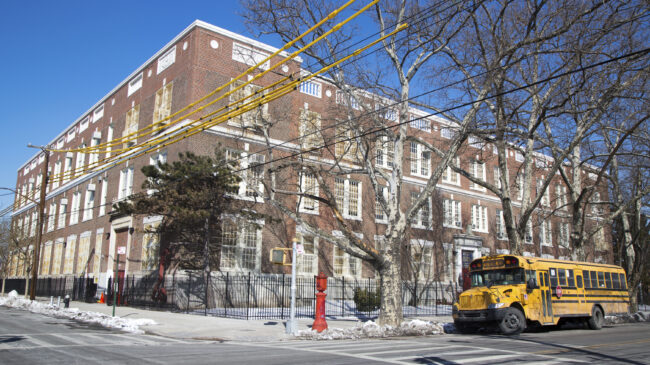Preliminary data on the 2019-2020 school year released by the U.S. Census Bureau reveals that the state of New York now spends more than $30,000 per K-12 student, further entrenching its position as the most expensive public education system in the country. Despite this new public school spending milestone, falling enrollment and dissatisfied parents indicate education dollars aren’t doing enough to help kids.
All told, New York spends $30,772 per student each year. This number doesn’t account for recent influxes of cash including $13 billion in federal COVID-19 pandemic relief and $3 billion in state dollars for last school year that taxpayers are footing the bill for. New York City schools will get roughly half of this total windfall, amounting to billions in additional funding for the embattled school district.
For perspective, this means that a typical classroom of 20 students costs New York taxpayers $615,000 each year. Yet, some still claim public education isn’t adequately funded and that high-performing charter schools like Success Academy drain funding from public schools.
K-12 spending will likely rise for the foreseeable future, but this trend is nothing new. A recent analysis by Reason Foundation reveals that between 2002 and 2019, New York’s inflation-adjusted public education revenue skyrocketed by $12,068 per pupil, or 68%. This is by far the highest growth rate in the country.
So where exactly are all of these additional dollars going? Not school choice, since New York does not allow programs such as education savings accounts or tax-credit scholarships that empower families with options outside of public schools. And they’re certainly not spent on New York City’s charter schools, which receive an estimated 19% less per student than traditional public schools, according to a study published by the University of Arkansas.
Instead, about 21% of new spending is going toward support services expenditures, which largely includes non-instructional staff such as counselors, psychologists and curricular support personnel. In fact, school administration grew by 65% in the last two decades and now consumes $1,133 per student each year, far exceeding the nationwide average of $738 per student.
However, the bigger story is that spending on instructional-benefit costs has overtaken school budgets, growing by an astounding 147% or $3,348 per student since 2002. This Census reporting category includes health insurance and other expenditures, but research suggests that teacher pension costs have fueled much of the observed growth.
As a result, about 19 cents of every education dollar in New York is now spent on instructional benefits, and if inflation-adjusted per-pupil costs had remained constant at 2002 levels, then taxpayers would’ve saved an estimated $8.5 billion in 2019 — enough to fund every school choice program in the U.S. nearly three times over.
The worst part is that these massive investments aren’t paying dividends for families, and for evidence look no further than cratering demand for New York City’s public schools. Data released by the city’s Department of Education show a 1.9% enrollment drop this year on top of last year’s 4.7% decline. In total, the city’s public schools have lost about 64,000 students during the pandemic, magnifying a trend that started before COVID-19.
The city’s handling of the pandemic deserves much of the blame for this. As my Reason colleague Matt Welch explains, “New York City, despite being mistakenly held up by Democrats and teachers unions as a model for school reopening, rattled parents’ nerves all 2020–21 with repeated school-year delays, capricious shutdowns, hybrid scheduling, and hair-trigger building closures.”
The bottom line is that New York needs to get more bang for its education bucks. State lawmakers should follow the lead of the 18 states that either enacted new choice programs or expanded existing ones in 2021. A recent study by EdChoice’s Martin Lueken estimates this could reap financial benefits of up to $301 million while also giving families access to personalized learning opportunities. School choice would be a win-win for both taxpayers and kids.
But policymakers should also reevaluate how much is spent on New York’s broken education system and resist efforts by the Biden administration to more than double funding for the federal Title I program. Money is like a drug that Department of Education officials and other bureaucrats can never get enough of.
A version of this column previously appeared in the New York Daily News.

